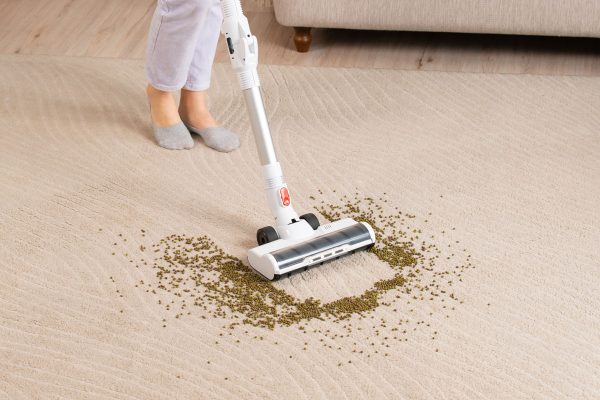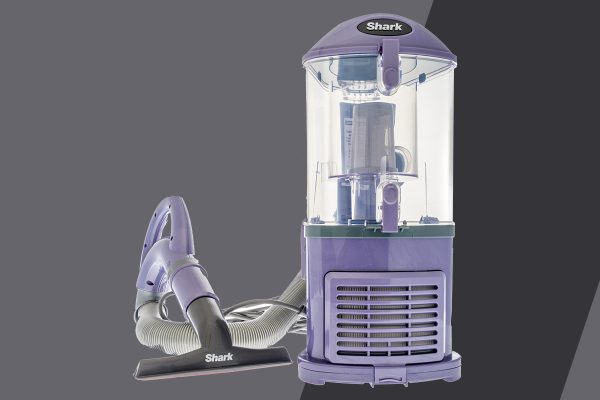Floor sanding dust, no matter how little the amount, can make your painted wood look rough to the touch. If you've been wondering what to do with the dust remnants of your floor sanding, you're on the right page. We have done our research and here is what we found to help you out.
The best way to get rid of floor sanding dust is to gather them in a disposable plastic bag and send them off to any disposal or recycling services. To clean them off your house, use a vacuum cleaner to wipe them away. This can help remove a bit of the fallen dust on your floor.
Whatever method you use, you still need to dispose of the dust. To know more about how to dispose of your floor sanding dust, keep reading. We have gathered enough information to answer your questions.
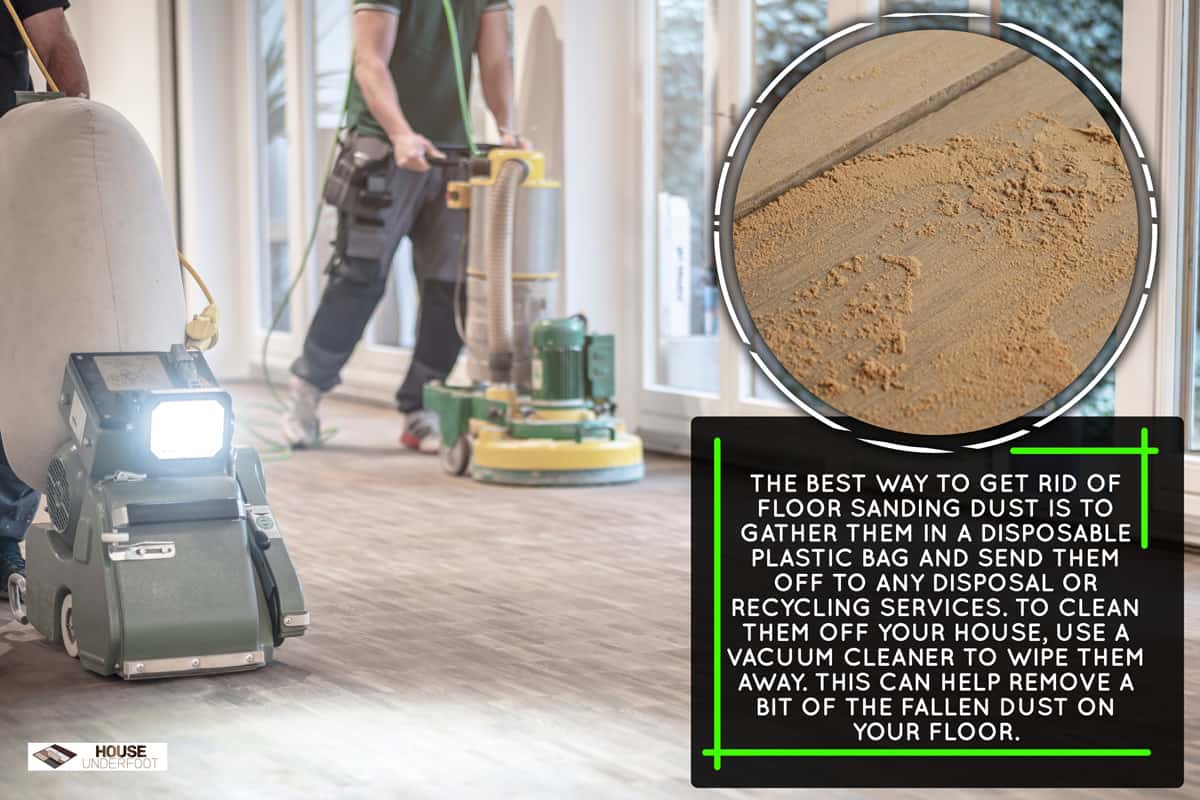
How Do You Properly Dispose Of Floor Sanding Dust?
One of the most efficient ways to dispose of sand dust in your room is to prepare. Before you start the process of floor sanding and to avoid excess dust, you need to remove every item that you don't need within the area.
By doing this, you will reduce the amount of dust that would gather and litter your home. The process of sanding your floor involves a lot of chemicals that can be harmful to your health if breathed in for too long.
After sanding and completing your work, you must get rid of the dust. This is why a face or nose mask is needed during this process. Gather the dust in a plastic bag and send it off to any service that takes care of disposals for commercial or recycling purposes.
You need to take note that some clouds of dust are inflammable. Using it at your fireplace can be potentially dangerous.
After disposing them to a disposal service, you need to thoroughly clean and vacuum your room with a vacuum cleaner and a mop or hire a professional cleaning service.
Check out this Dirt Devil Vacuum cleaner on Amazon.
Does Floor Sanding Create A Lot Of Dust?
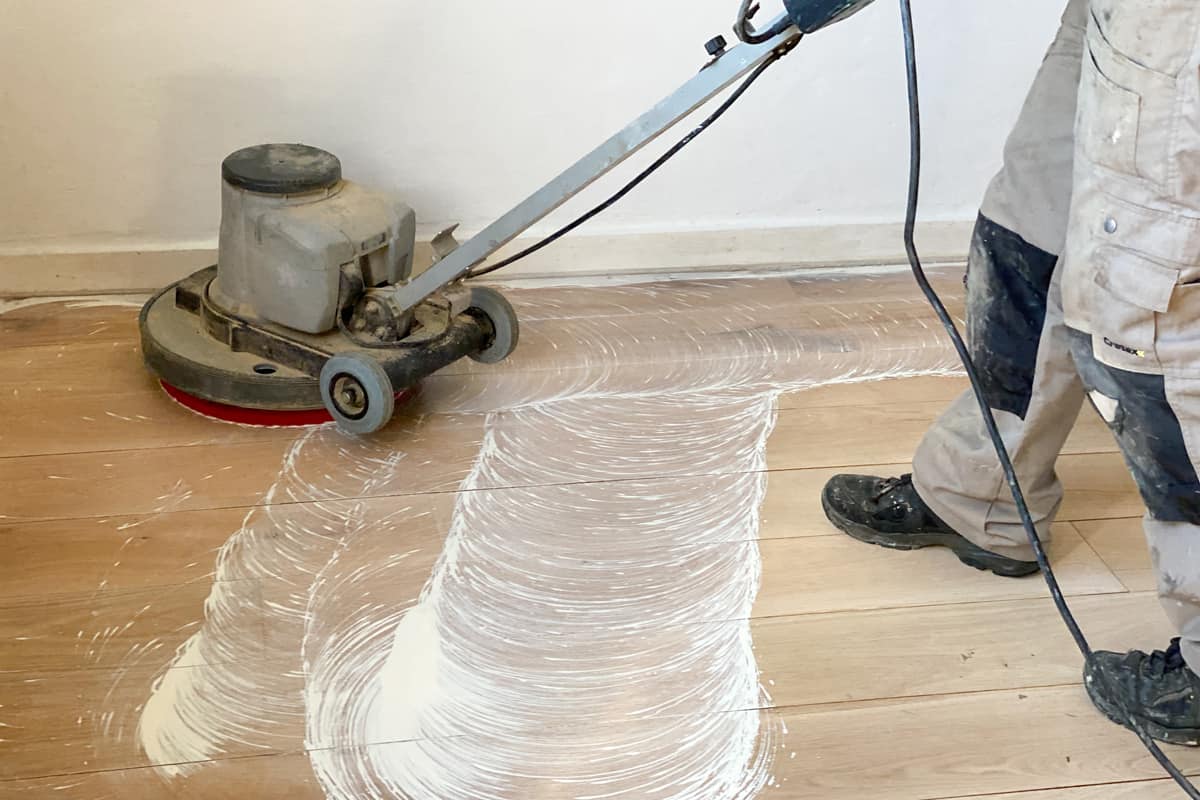
Yes, it does create a lot of dust. Sanding a floor makes it look cleaner, fresher, more appealing, and more organized. You will always feel happy looking at your new sanded floor.
When sanding your floor, you need to first understand that it is almost impossible to do that without generating noise or dust.
Wood is a natural product and the type of equipment and machine you use will determine how much dust you find in your home.
Once again, you must make use of a face mask or wear a protective gadget to protect your nose and ear from dust and noise.
There are a few clever ways to curb the release of dust when sand flooring your home. One is to vacuum the floors before you start sanding your flooring.
How Long Does It Take For Dust To Settle After Sanding?
You may want to remain in your home when the floor is being sanded to inspect the process or simply stay back.
Whatever the reason, ensure you do not inhale the dust or it will affect you. Dust particles can mess up your respiratory system and it is not something you should treat with zero concern.
There are different types and sizes of dust particles you should know of. Some specks of dust are inhalable.
These specks of dust can enter the mouth and nose anytime even during normal breathing. They can settle within 1 minute. They are made up of 100 microns particles.
There is also a thoracic type of dust. They consist of 10 particles and can pass through the mouth and nose and get past the respiratory area. These types of dust are considered dangerous and will take about three minutes to settle after sanding.
How Do You Keep Dust Down When Sanding Hardwood Floors?
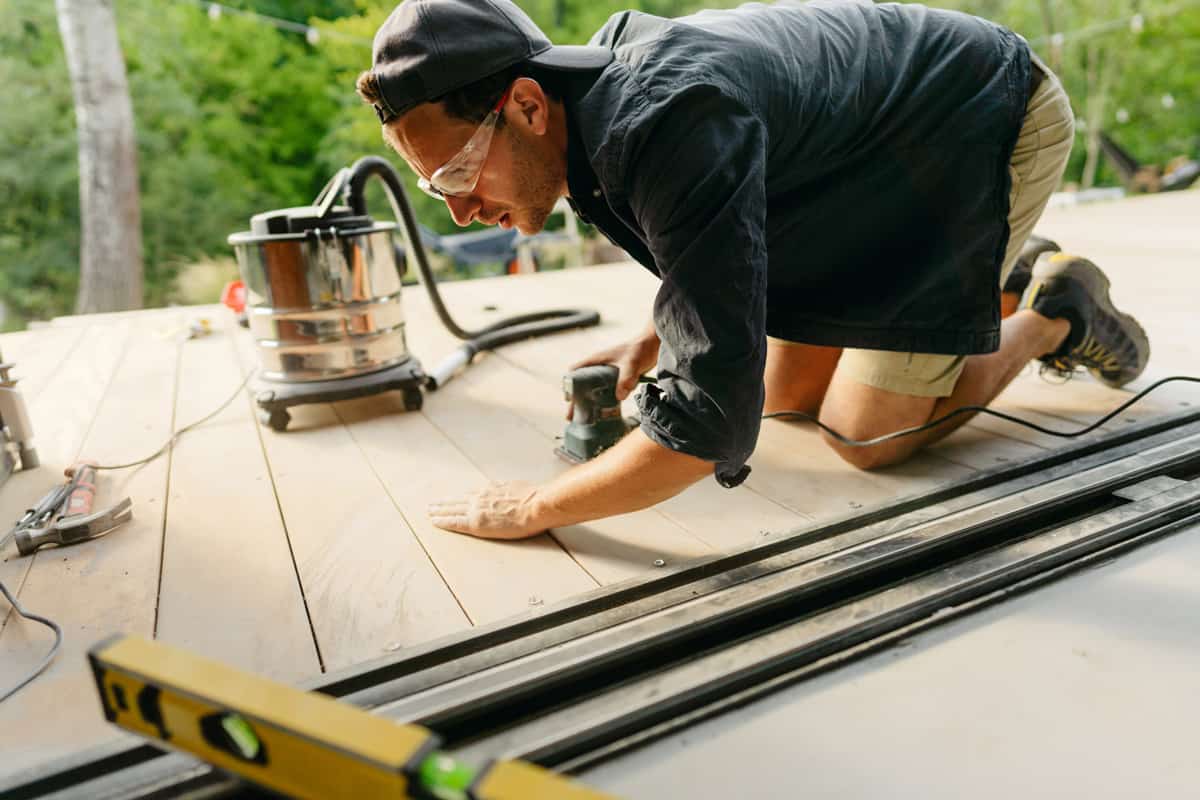
There are a lot of dust-free services you can patronize when sanding your floor. Again, it is important to note that sanding your floors can't be 100 percent dust free; they can only be controlled.
The good thing about sanding hard floors is that they are automatically designed to look appealing without too much effort. This is great because you do not have to sand them every time.
Nonetheless, if you are about to sand your hard floor, you should know that using an efficient sander powered to take on heavy-duty sanding is a necessary option for your floor sanding.
This type of sanding machine is designed to handle specks of dirt and dust particles efficiently thereby reducing the flow of dust during sand flooring.
The second thing to do when sanding your hardwood floor is to cover all your essential properties or appliances. You can do this either with a plastic sheet or small airtight material.
Doing this will help you greatly after the sand flooring process. Your properties will be free of dust and you will not have to engage in any other rigorous process of cleaning your properties.
Another thing to do when flooring your hardwood floor is to wear safety goggles. No matter how efficiently a heavy-duty sanding machine has been built, like all machines, it still has its cons.
One con is that it can raise different types of dust and sharp wood particles into air particles. These can affect your nose and eyes if not properly taken care of. You must be cautious to avoid injury to your respiratory organ and eyes.
What To Do After Sanding A Floor?
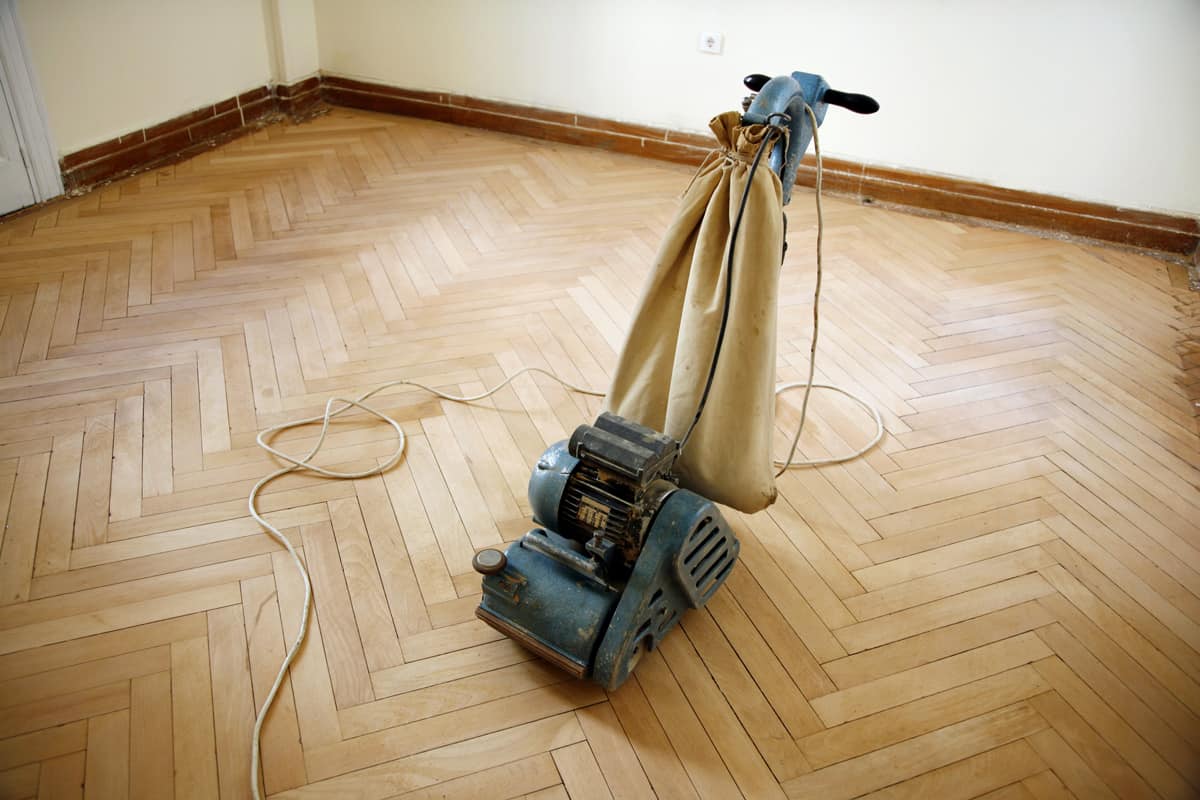
After sanding your floor, you need to clean up your house properly. Leaving the dust particles can affect your organs in a way you won't detect quickly.
Use a vacuum cleaner to suck in all dirt and dust particles around the floor once the sand floor dust has settled. After that, clean the floor with either water or spirit and leave it to dry afterward.
After sanding, the next thing to do is finish. If you can, always apply the first coat. You have to do finishing the same day you sanded your floor. If you waste time before finishing your floors, grains may appear on the floorboards.
With a floor pad, add a floor varnish because it will help seal the wood you've sanded. It is essential to let every corner of your floor get touched by the floor pad.
You should also check and inspect the floor for any holes. During sanding, every nook and cranny should be filled up, however, this process can be easily skipped or missed.
Can You Walk On Freshly Sanded Floors?
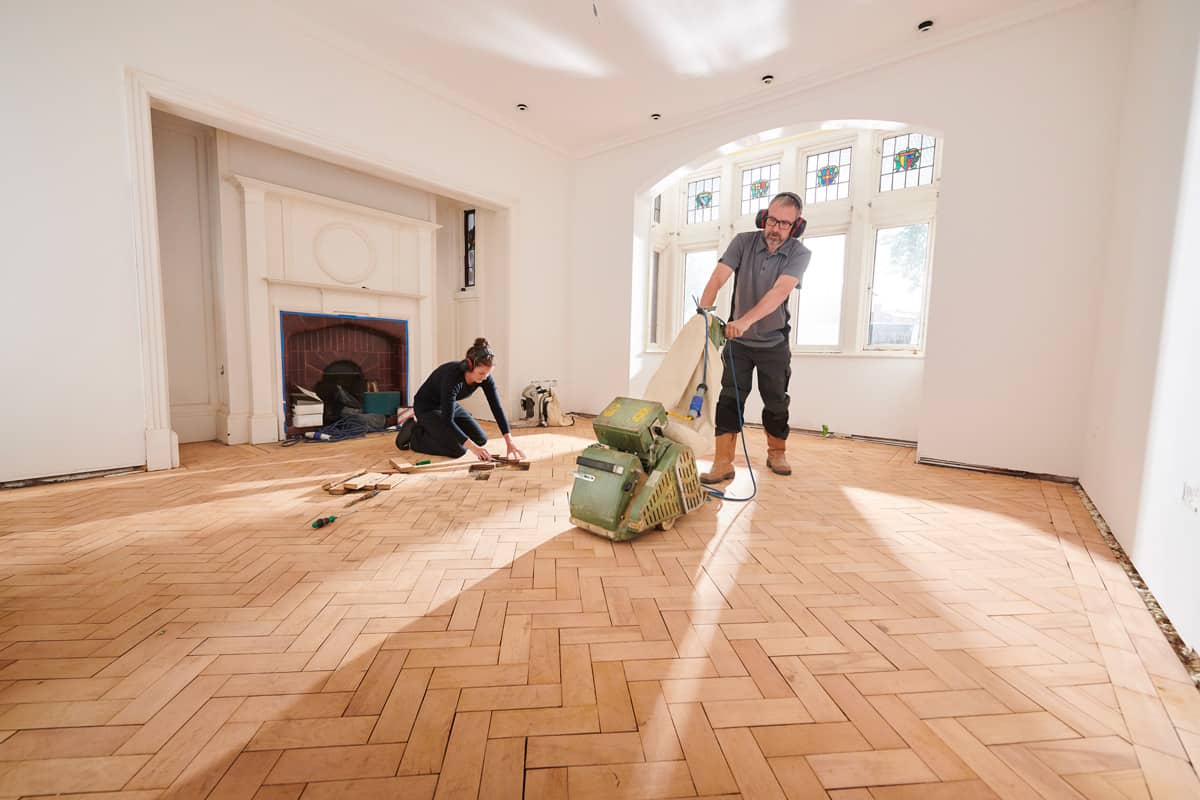
Avoid walking around barefoot on your freshly sanded floors. Doing that will make the floor prone to damage.
Sanding a floor involves the use of chemicals and processes that may take time to blend well into the wood fully. The chemical used mostly for sanding a floor is polyurethane and it takes up to a week to become hard.
You need to be careful so you won't stain the floors. After 24-48 hours, you can move around your sanded floors but do so with caution, care, and socks.
When moving back your pieces of furniture to their usual place, you may have to wait about 4 days or more to do so. You may also need to drag them carefully back to their position.
How Much Does It Cost To Sand A Floor?
Sanding a floor is usually tedious that requires extreme caution and focus. The process goes through many tests and processes for your hardwood to be free of rough blemishes. On average, sanding a floor can cost about $0.50 to $3 per square foot.
Is Floor Stain Toxic To Breathe?
Aside from unpleasant smells, floor stains are toxic and overwhelming to breathe in. They can cause symptoms like flu, and breathing problems.
Sometimes you won't detect these problems until it starts affecting you. After sanding your floor, ventilate your home properly so that bad air can escape from the home.
In Summary
The process of sanding your floor involves a lot of chemicals that can be harmful to your health if breathed in for too long. The best way to dispose of the dust is by gathering them in a plastic bag. They can be removed from your home by vacuuming them.
If you enjoyed reading this, here are other similar articles:


